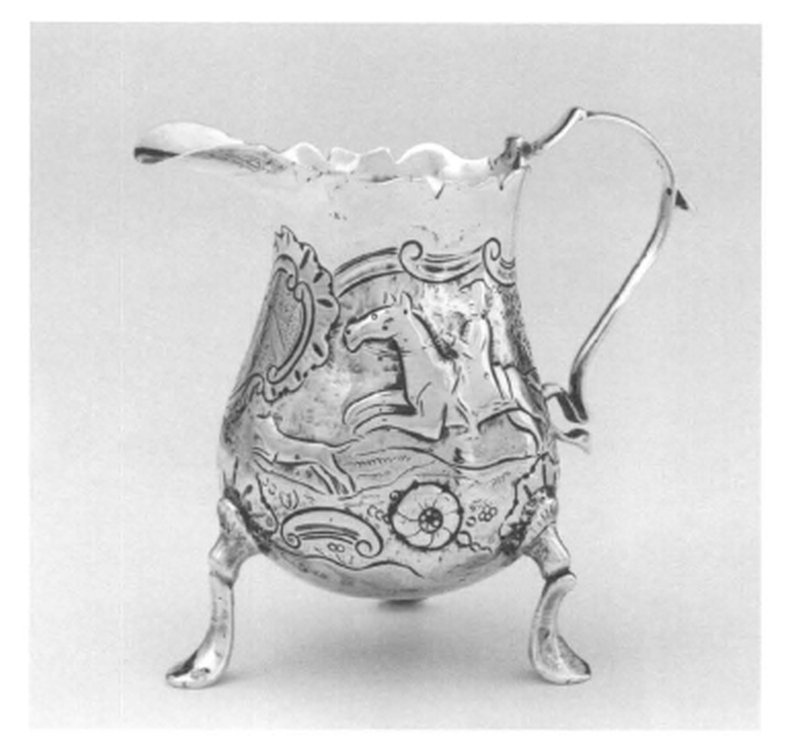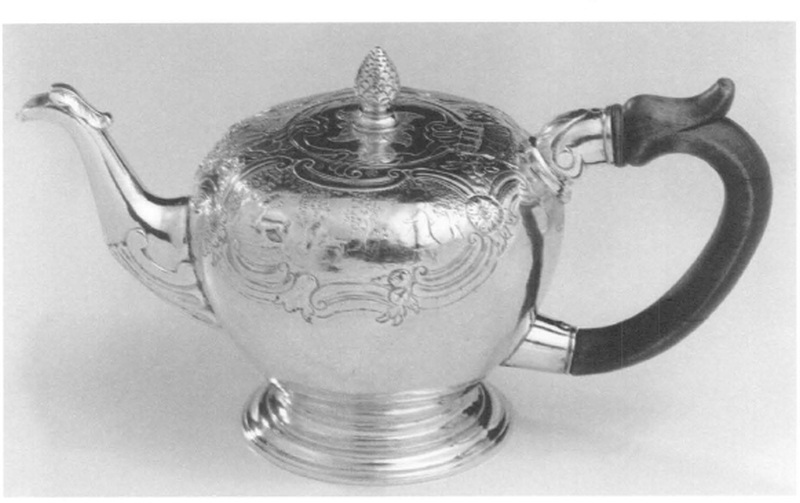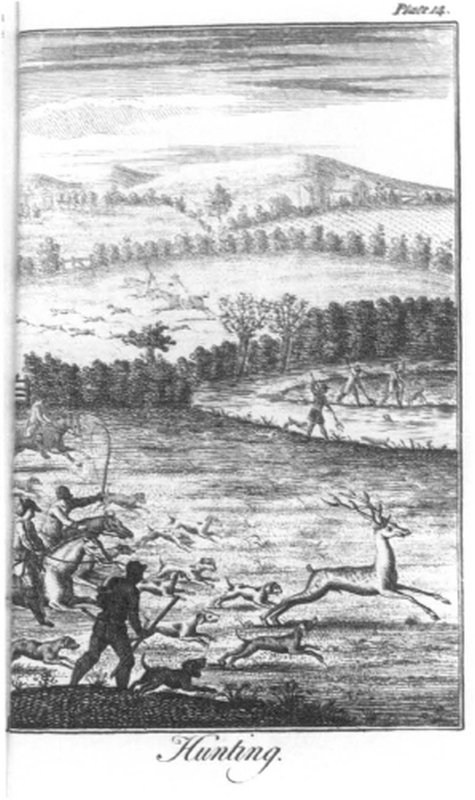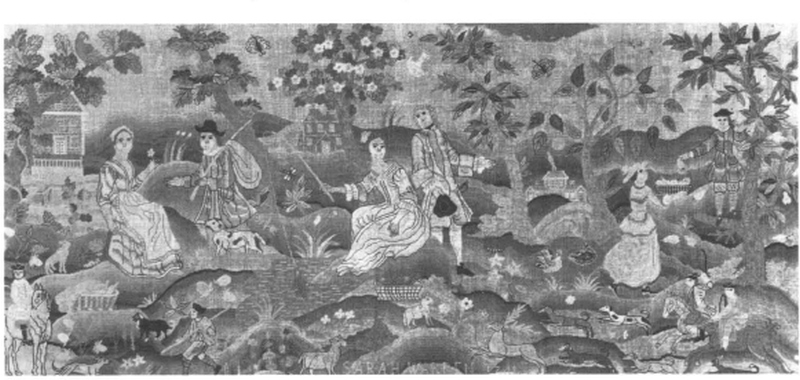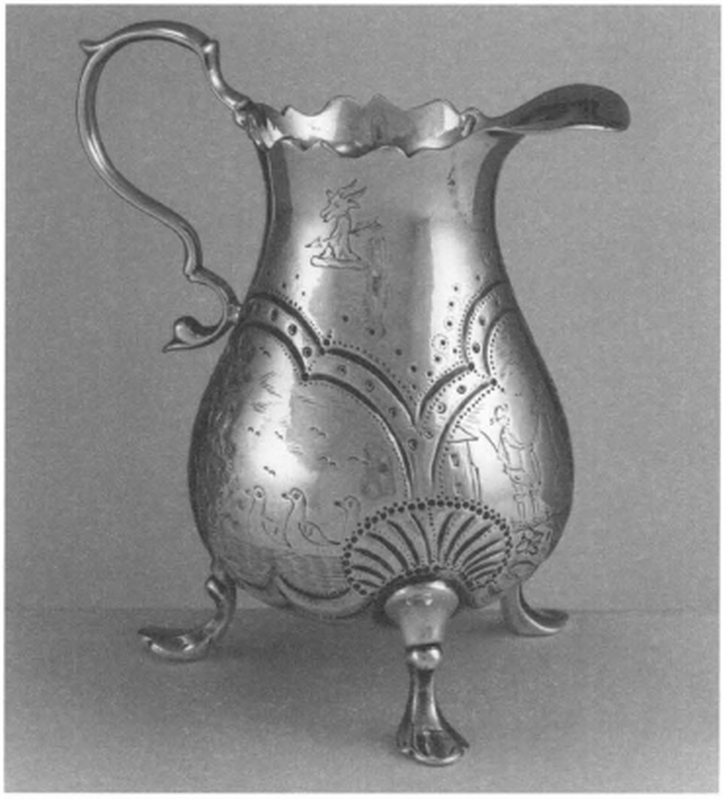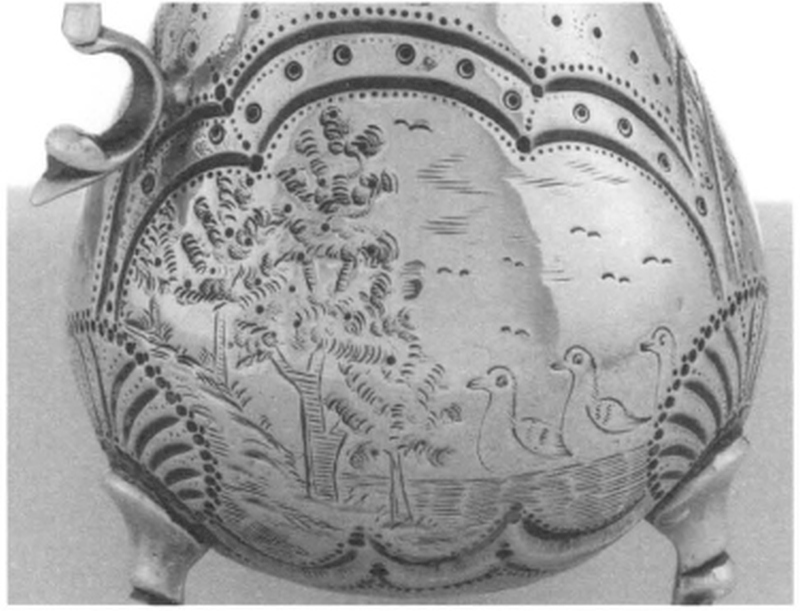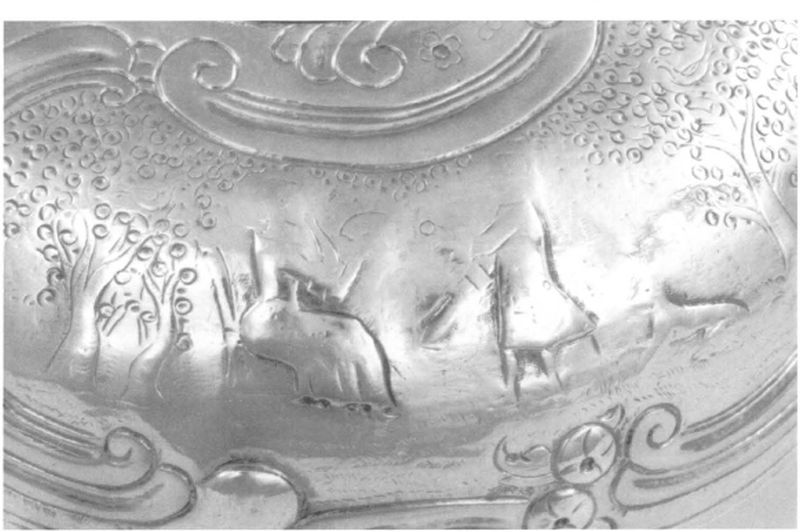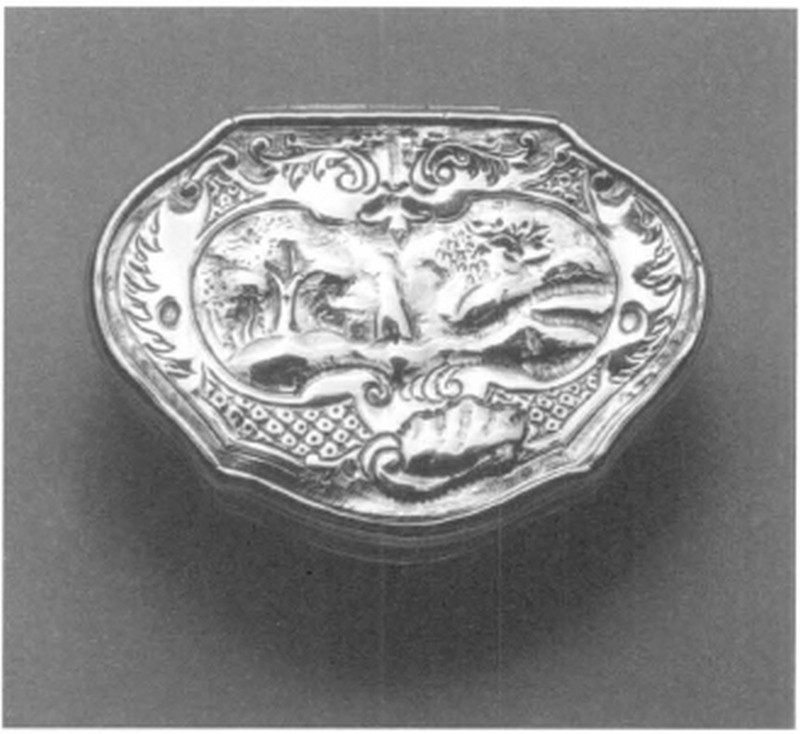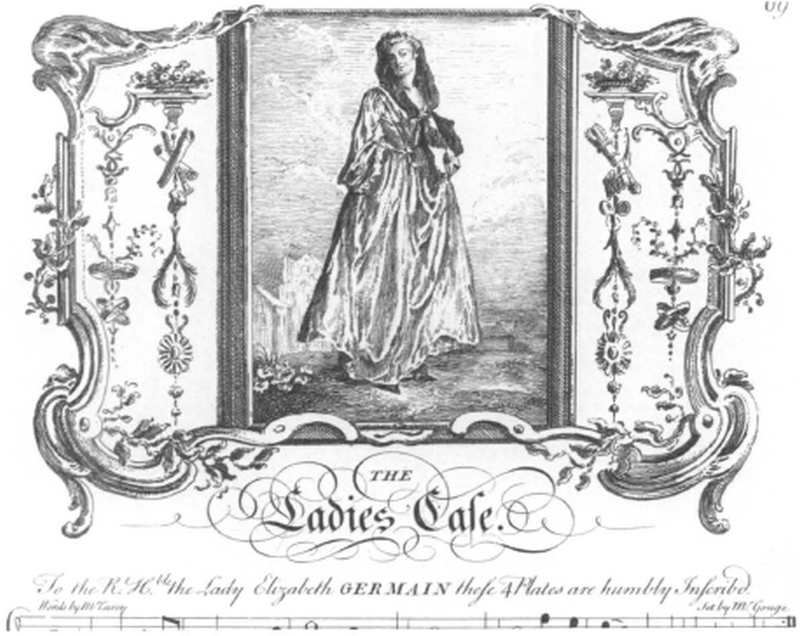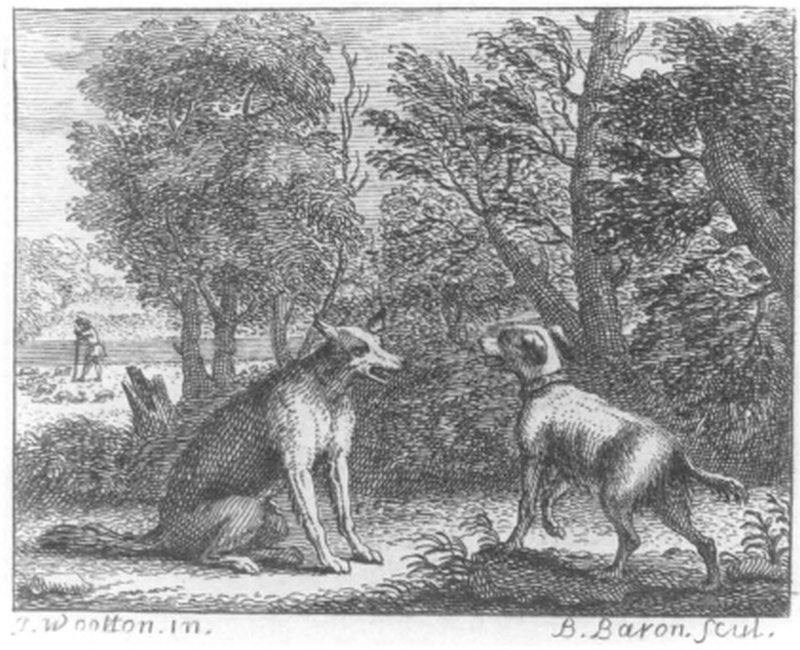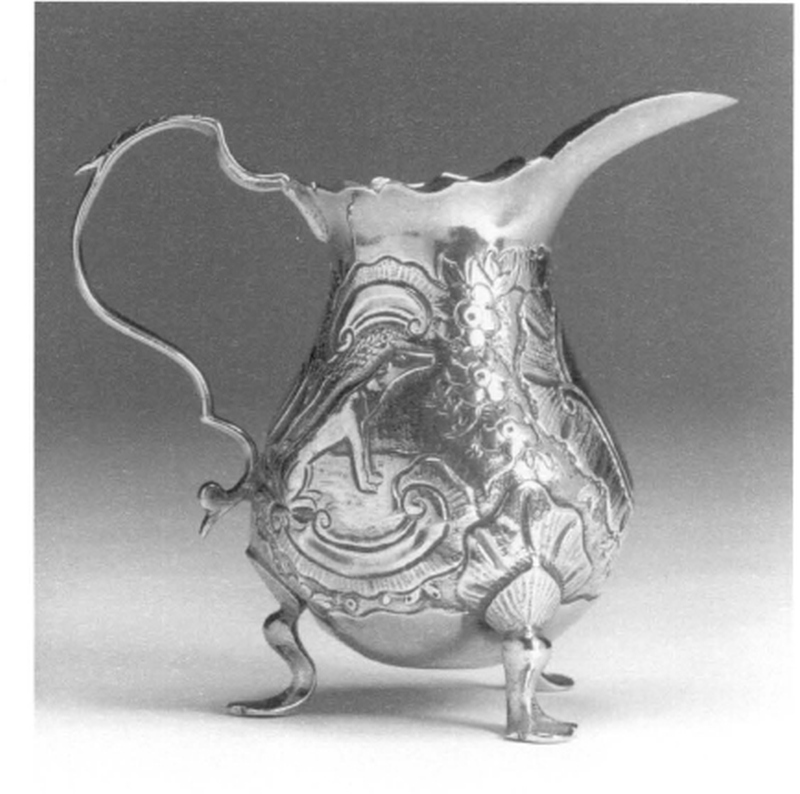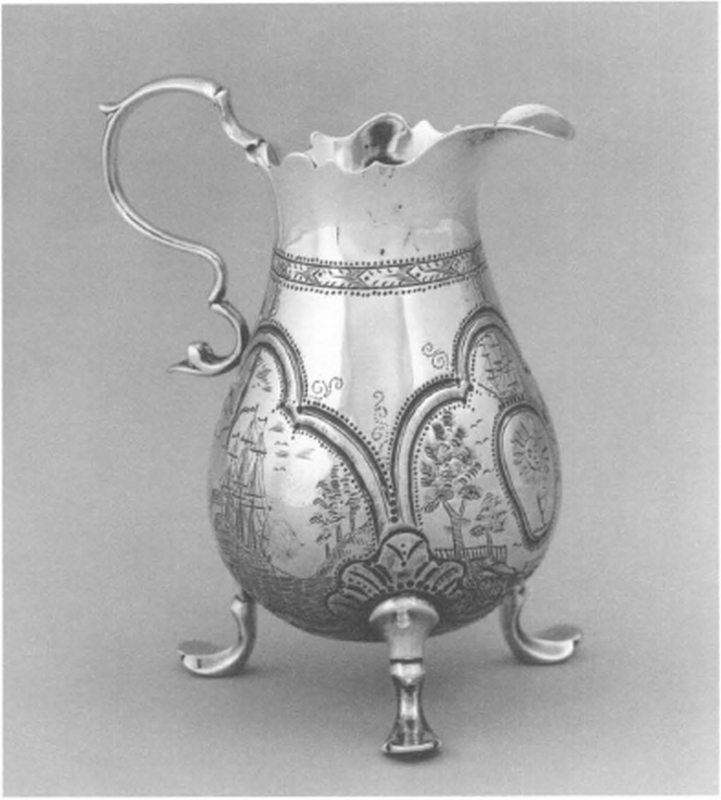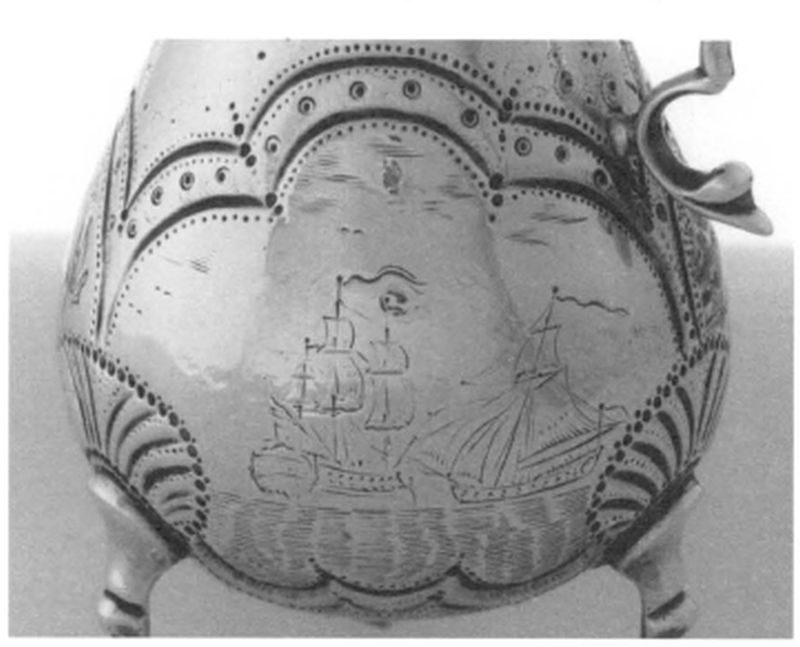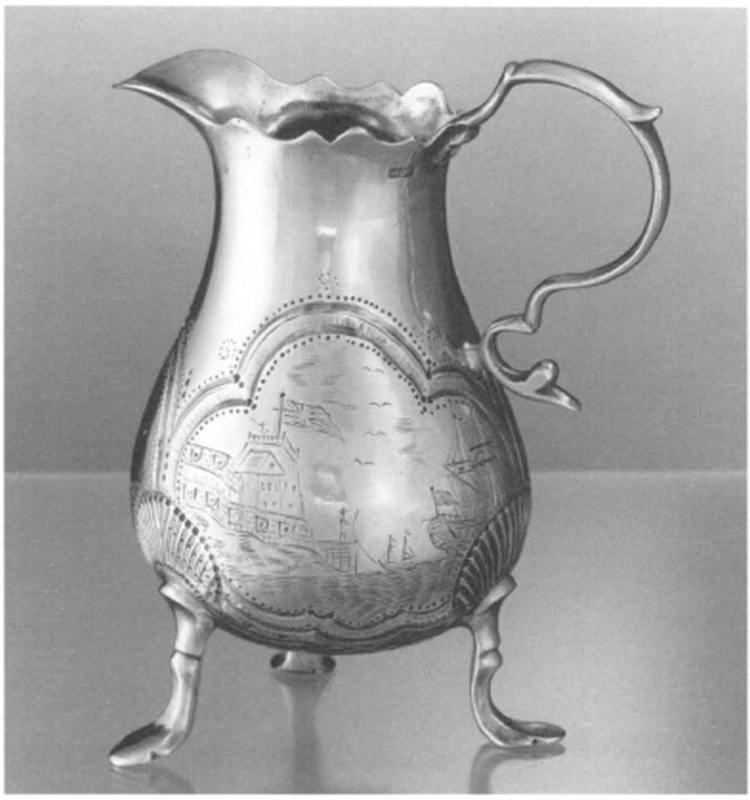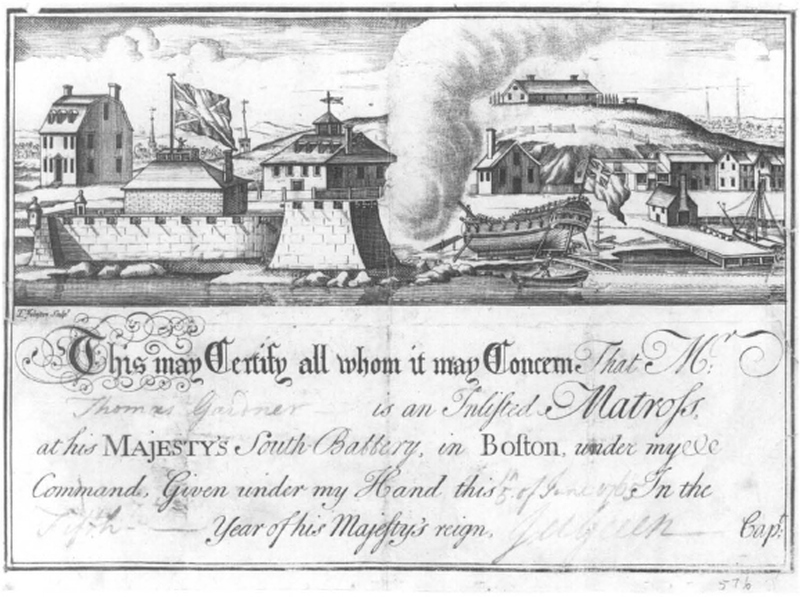Chasers, the Chase, and Other Scenes on Boston Rococo-Style Silver
Patricia E. Kane
In the mid-eighteenth century, silversmiths in London, Dublin, and Jamaica were making rococo-style silver ornamented with narrative scenes. On the mainland of British North America, however, the practice apparently went on only among Boston silversmiths; according to the evidence, silversmiths in New York, Philadelphia, and Baltimore did not ornament silver in this way.1 The narrative scenes chased on the pieces explored here, eight pieces of rococo-style silver made in Boston between 1745 and 1760, correspond to themes represented in other art forms, such as embroidery, made in that colonial center at the same time. While the themes depicted at times overlap in meaning and at other times diverge, they nonetheless provide us with a moment frozen in time—a moment that captures the stories this class of colonial New England consumers told themselves, the stories that reflect their concerns and interests.
As other papers in this volume demonstrate, those colonials who could afford to buy silver needed to articulate, establish, and/or consolidate their status within their culture. It will be no surprise, then, that the narratives depicted on most of these pieces express some aspect of that same socioeconomic concern, as we will see with hunt scenes, equestrian motifs, and pastoral landscapes. Less obvious might be the timeliness of scenes about courtship and sexual pursuit; while these concerns have a certain timelessness as well, their particular expression on these pieces depends on motifs particular to eighteenth-century Anglo culture and therefore relate to the social aspirations and anxieties of their users. Finally, the most specific to these colonials are pieces that actually refer relatively explicitly to the military conflicts of the 1740s.
Today, there are only eight known pieces of Boston-made rococo-style silver with narrative chasing.2 Four are creampots made by Jacob Hurd between about 1745 and his retirement from silversmithing in roughly 1755. Thomas Edwards produced a creampot with narrative chasing between 1744, when he returned to Boston after a fourteen-year sojourn in New York, and his death in 1755. A snuffbox by Thomas Dane dates from 1752, and the other two pieces considered here, a creampot and a teapot circa 1750, come from the shop of William Simpkins.3
Chasing is a specialization within the silversmiths’ trade, and the silversmiths who marked these eight pieces may not have executed the chasing on them. In this decorative technique the smith distends the silver by striking it on the inside with a snarling iron, a long iron rod with either a goose-necked or angular short stem. Once the metal has been pushed out, the smith fills the object with or embeds it in pitch (a mixture of resins, plaster of Paris, and tallow). Working from the exterior the craftsman then hammers the surface of the metal with chasing tools—three to five-inch long iron rods with decorative ends—to give definition to the distended areas. The process, which is time-consuming and therefore adds to the cost of an object, requires excellent drawing skills.
Status
For eighteenth-century American colonials, the desire to establish or express status generally led them to the trappings of gentility most enjoyed by their counterparts in England; those trappings appear prominently on the teapots and creampots that these New Englanders would have set on their tea tables. Several of the pieces here capture images of the manor life associated with England’s landed gentry: the hunt, horsemanship in general, and most broadly, the “tamed nature” of the country estate.
Two pieces, the creampot by Edwards and the teapot by Simpkins, display scenes of the chase. On the Edwards creampot, a male figure astride a horse at full gallop and a running hound chase a leaping stag (figs. 1 and 2). The horse’s lunging front legs are bent and its rear legs are splayed backward; only its right rear hoof touches the ground. The horse’s head and ears stand erect and his full tail streams behind. The rider, wearing a long coat and a brimmed hat, sits in the saddle with his knees bent and his arms pressed close to his body as he clasps the reins. The Simpkins teapot (fig. 3), on the pourer’s side, is also illustrated with a stag hunt (fig. 4). An archer, wearing a buttoned knee-length coat with a large pocket and a button below the dropped waist, is shooting at a stag. Two hounds pursue the stag through a wooded countryside; one bird flies overhead and another bird perches on a tree branch.
The identification of hunting as an aristocratic sport has a long history. As early as the sixteenth century, publications espousing the importance of hunting were available to English readers. Young men aspiring to a higher social status read hunting treatises in order to master this aristocratic pursuit, which each hoped would further his acceptance as a gentleman. Publications recommending the wholesomeness and overall value of outdoor recreation, and especially the hunt, abounded in England and certainly made their way to colonial readers as well. Both Richard Blome and Nicholas Cox published books called The Gentleman’s Recreation in the late seventeenth century.4 More modest publications included An Essay on Hunting by a Country Squire, published by Thomas Gosden (London, 1733), and The Sportsman’s Dictionary, or, The Country Gentlemen’s Companion (London, 1735). These volumes covered hawking, hunting, fowling, fishing, racing, and riding. The chaser of the Simpkins teapot might have had access to the Sportsman’s Dictionary, which included an illustration of hunting (fig. 5). The chaser of the horseman on the Edwards creampot may have had access to a sheet of designs from a set of japanning prints published by George Bickham in 1747 (fig. 6).
Fig. 1. Thomas Edwards (1702–1755), creampot (left side), Boston, Massachusetts, ca. 1750–60. Silver; h. 35⁄16 in. The Cleveland Museum of Art, Gift of Hollis French (40.393). © Cleveland Museum of Art, 2000.
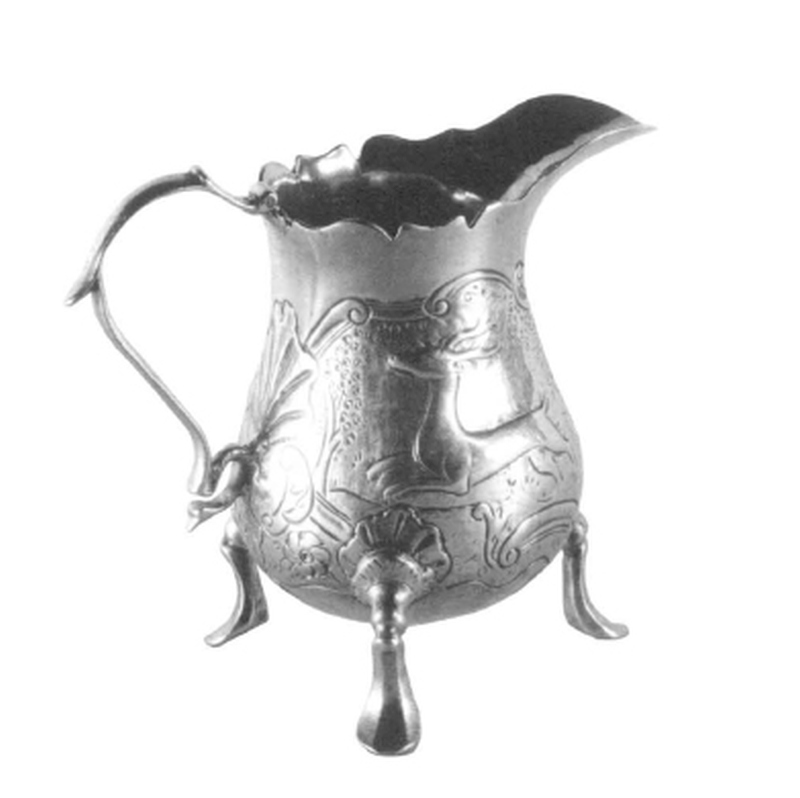
Fig. 2. Right side of Thomas Edwards creampot illustrated in fig. 1.
Fig. 3. William Simpkins (1704–1780), teapot, Boston, Massachusetts, ca. 1750. Silver; h. 5¼ in. The Burrows Collection, on loan to the Sterling and Francine Clark Art Institute (1984.149).
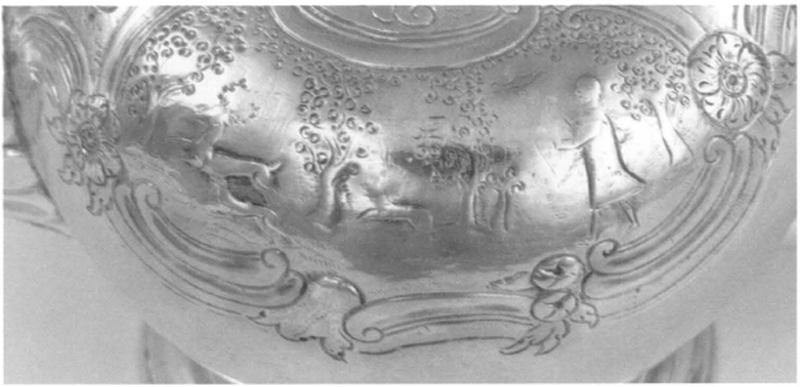
Fig. 4. Detail of William Simpkins teapot shown in fig. 3.
Fig. 5. “Hunting.” From The Sportsman’s Dictionary (London, 1735), vol. 1, plate 14. The Beinecke Rare Book and Manuscript Library, Yale University.
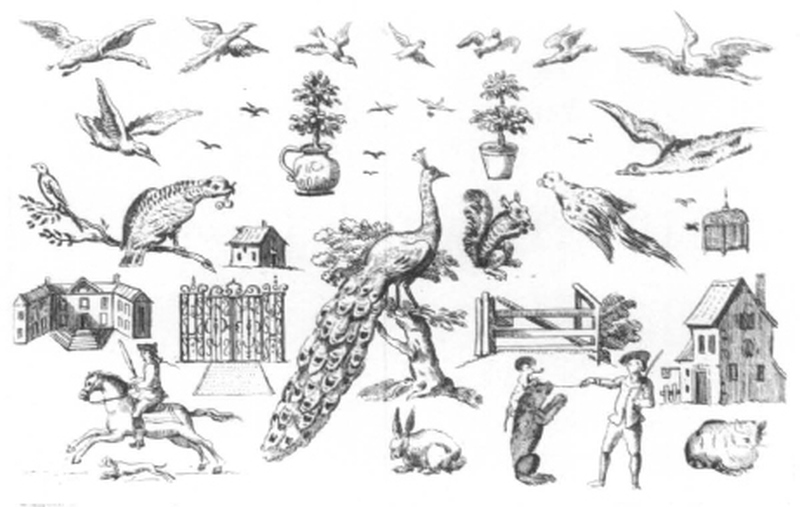
Fig. 6. Plate from George Bickham, Jr. (1706?–1771), General Rures [sic] for painting in oil and watercolors; washing prints, maps, and mezzotintoes. With the art of japanning, etching (London, 1747). Yale Center for British Art, Paul Mellon Collection.
Although riding to the hounds was less popular in New England than elsewhere, the popularity of the chase scenes in Massachusetts, which turned up in embroideries as well as silver, was due to the status suggested by the association with the prescribed activities of Old World gentry. The contextual evidence for the meaning of the hunt to New England’s elite and aspiring elite is easy enough to find, not just in the silver itself and the embroidery, discussed below, but in the prints we know Bostonians owned. Merchant John Simpson, for example, who owned embroidered pictures described as “1 large work picture & 7 small ditto,” also owned “4 Hunting pieces” when he died in 1764. The likelihood that a larger market existed is suggested by a notice in a Boston newspaper offering hunting prints for sale at auction in 1758.5
Many of these prints or publications could have served as sources for the silver engraver. Or, if not directly for the chaser, then for the tent-stitched needlework pictures Massachusetts women made during this same era.6 As Betty Ring has written, pictorial canvas work appeared in Boston by the early 1730s, but with the exception of Norwich, Connecticut, needlework of this type failed to become popular in the other colonies.7 Needlework was one among an array of genteel accomplishments expected of young ladies; consequently, as part of their education, well-to-do young women worked these pictures from patterns drawn by their instructors. Dated examples of pictures made in Massachusetts survive from 1746 and 1748.8
Nancy Graves Cabot established that many of the figures and scenes in these embroideries derived from print sources; the scenes on the silver may well have derived from print sources as well. Some of the horsemen and hounds—for example, those on a picture embroidered by Sarah Warren in 1748 (fig. 7)—mirror those in the lower left corner of The Chace (1726), engraved by Bernard Baron after John Wootton (fig. 8).9 The later objects and the earlier image differ significantly only in the prey: the stag depicted on the silver and in the embroidered pictures replaces a hare in the engraving. In historical context, the change makes sense: stag hunting had the most prestige for English hunters, since deer were in shorter supply than any other type of game. On the Simpkins teapot, only the figure with the bow and arrow lacks a direct counterpart in the embroidered pictures.10
Horsemanship in general also suggested traditional status to colonials, as in a creampot (fig. 9) made by Jacob Hurd for the Providence, Rhode Island, merchant William Corey and his wife Mary (Aiken) Corey. On the front panel, a man wearing boots, trousers, a short jacket, and a hat holds a whip in his left hand and the bridle of the horse he is facing in his right hand (fig. 10). The saddled horse with cropped tail stands in profile with his head and ears erect and his right front leg raised. Like the scenes of the chase, the image on this cream-pot associates the owner with the activities of a gentleman. The posture of the man echos a figure common in the hunting prints, which often feature a groom holding a horse on a lead.11 Other precedents for this kind of equestrian imagery, also not necessarily about hunting, turn up in the colonies earlier in the century, such as prints of race horses. When Mrs. Sarah Dolbear died in Boston in 1745, for example, her estate included “a picture of Duke Bolton’s Horse,” possibly a print of Fear-Nought, a horse owned by the duke of Bolton and the winner of famous matches in 1732 and 1733.12 At least one explicit example of the colonial desire to acquire prestige through riding appeared later in the century, in a 1773 Boston advertisement, when a Frenchman named Regnier offered to teach, among other things, “HORSEMANSHIP;—An Art justly admired and counted Part of polite Education.”13
Fig. 7. Sarah Warren (1730–1797), needlework picture, Boston, Massachusetts, 1748. Silk, wool, linen; h. 10 in., w. 20⅝ Winterthur Museum (1962.69A).
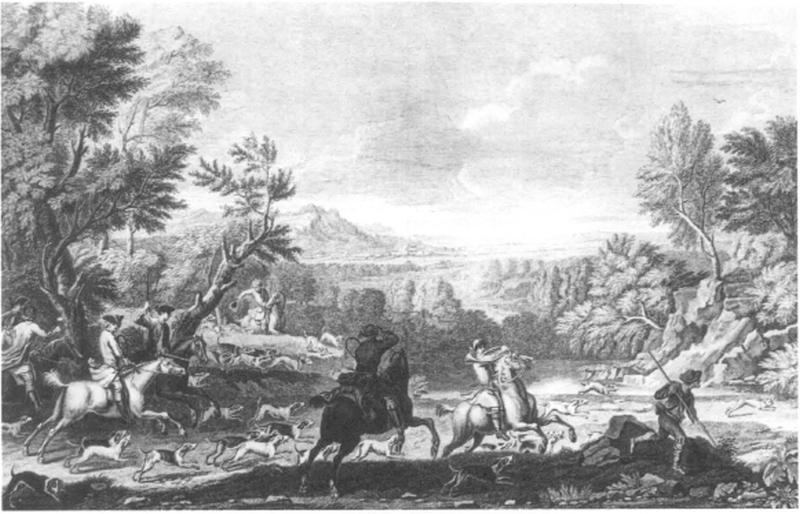
Fig. 8. Bernard Baron (after John Wootton) (ca. 1683–1764), The Chace, 1726. Line engraving; h. 21¾ in., w. 31 in. National Trust, Clandon Park, England.
Fig. 9. Jacob Hurd (1702/03–1758), creampot, Boston, Massachusetts, ca. 1750. Silver; h. 41⁄16 in. Museum of Fine Arts, Houston, Bayou Bend Collection, Gift of Miss Ima Hogg (B.69.112).
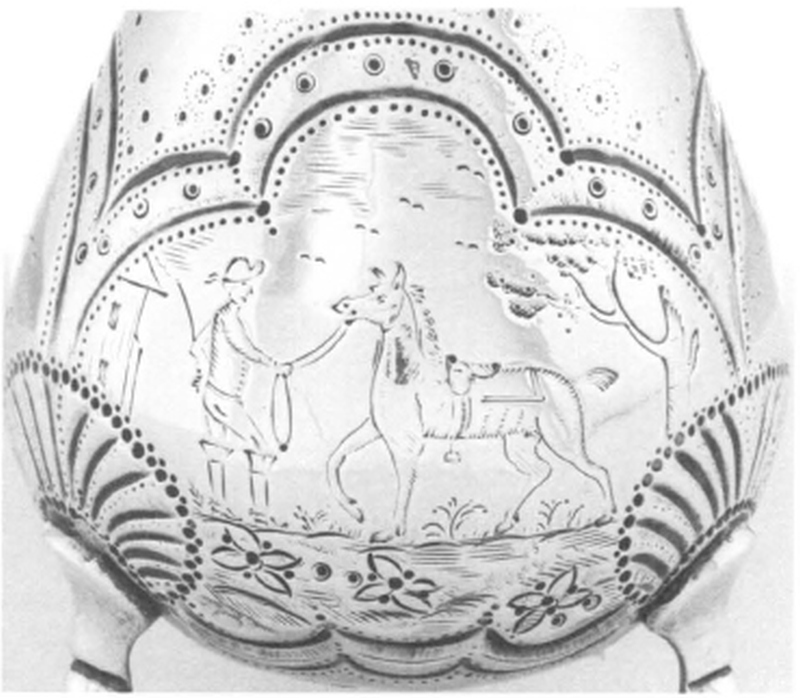
Fig. 10. Detail of Jacob Hurd creampot shown in fig. 9.
Another chased panel on the Corey family creampot depicts waterfowl swimming in a small body of water (fig. 11). Similarly, on another Hurd cream-pot, two swans swim along, one preening its neck feathers. A panel on the same pot shows a landscape that suggests a traditional manor estate: a large building looms on a hill below which is a gate and a fence. Like the hunt, this kind of landscape, particularly with the manor in evidence, suggests the traditional wealth and stability of the English gentry. The popularity of such allusions among New Englanders is also attested to in the embroidered needlework, where birds swimming in small bodies of water were stock imagery.14 These generalized allusions to the pastoral, to the delights of tamed nature, enjoyed wide appeal in the mid-eighteenth century when they were fundamental to rococo taste.
Sexual Pursuit and Courtship
The depiction of noble pursuits on the side of a silver teapot has a solid and fairly obvious class association: the hunt, horsemanship, ownership of a country estate all supposedly demonstrated one’s gentility, as did the possession of a silver tea set. The meaning of other narratives chased on the silver might seem less self-evident today, but their importance to the class of people using the tea sets would have been no less vital.
One piece under consideration here actually pulls together the hunt image discussed above and another prominent narrative theme, that of courtship or sexual pursuit, by virtue of a metaphorical connection that would have been immediate to its contemporary viewers. The Simpkins teapot, described above, demonstrates the depth of meaning of what appears to be a fairly simple image quite well. On the other side of the teapot, one might say the flipside of the stag hunt, is a courtship scene.
This panel shows a woman seated in what appears to be an orchard (fig. 12). Her left hand is raised toward her face and her right hand, extended in front of her, holds what is probably a bird. A standing male figure faces the woman and in his left hand holds toward her a round object, perhaps a piece of fruit from one of the trees that surround the couple. The man is hatless and wears a knee-length coat with cuffed sleeves and a large button at the back of the waist. A dog in profile is seated behind him and birds perch in the trees to the left and right.
Below, I will go over the elements that identify’ this as a courtship scene, but not before addressing how the pairing of the two scenes, the stag hunt and the seated couple, creates a shared meaning—the hunt as sexual pursuit, courtship as a hunt. While the association is certainly not foreign to us today, it was an association that eighteenth-century viewers would have found in many kinds of texts all around them. Music published at this time, for example, typically drew on the rococo flair for double entendre. The Musical Entertainer, first published by George Bickham, Jr., in 1737, contains the song “The Return from the Chace,” in which a parallel develops between the pleasures of pursuing the stag and those of pursuing the opposite sex:
The Stag rouz’d before us
Away seems to fly,
And pants to the Chorus,
Of Hounds in hill Cry;
Then follow follow follow follow
The Musical Chace,
Where Pleasure and vig’rous
Health you embrace
The Day’s Sport when over;
Makes Blood circle right,
And gives the brisk lover,
Fresh Charms for the Night.
Then let us now enjoy
All we can while we may
Let love crown the Night,
As our Sports crown ye Day.15
The Simpkins teapot, as does this verse, suggests a close association between the sports of the day and the sports of the night. And once the association is recognized, the stag hunt on the Simpkins teapot becomes intriguing in other details as well: the archer about to shoot at the deer sharpens the double meaning of the scene by virtue of the possible allusion to Eros, the god of love.
The function of these numinous hunt scenes on objects that were destined for domestic use and display may also have lent their meanings to social activities. As Rodris Roth has written, the tea ceremony was the very core of family life, bringing together as it did the whole family once a day, and it was also a time at which the home welcomed friends, acquaintances, and even strangers. Therefore, the decoration on a teapot, such as converse panels describing a stag hunt and a courting couple, would have had a prominent place in the family’s social life. Furthermore, young women acquired silver objects in anticipation of marriage and largely took responsibility for serving at the tea table, a fertile setting for growing acquaintances between marriageable men and women.16
The Simpkins teapot and Edwards creampot may well have been made for young unmarried women who would have used the objects during a period of courtship. Although research has failed to turn up a history of ownership for either piece, certain details point to this possibility. Only one set of initials, MS, appears on the teapot, suggesting ownership by an individual rather than by a married couple. The Speakman coat of arms on the creampot could belong to either a couple or a single person, but it was in fact the custom for women to have their silver ornamented with their arms before or at the time of marriage. Combined with the narrative scenes chased on the panels of the teapot, the likelihood that all referred to a single woman preparing for marriage appears quite high.
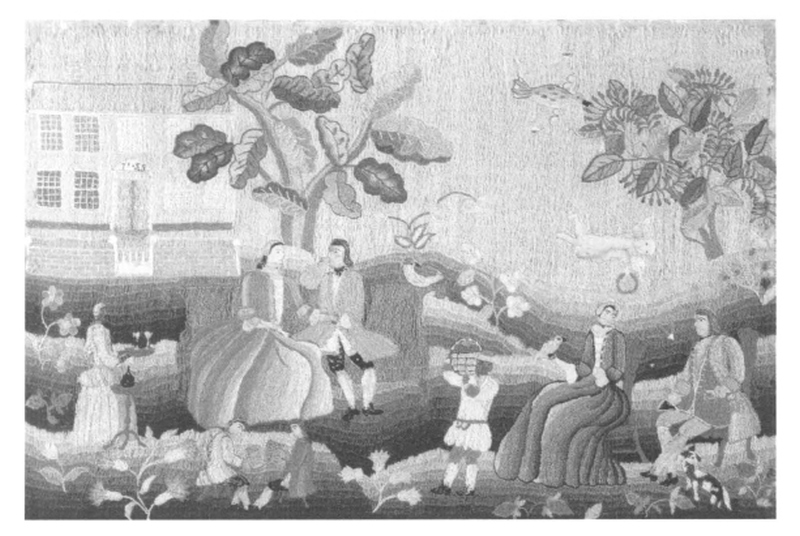
Fig. 13. Unknown member of Chandler family, needlework picture, Boston, Massachusetts, 1758. Wool and silk on linen; h. 15 in., w. 23 in. Private collection. From Betty Ring, Girlhood Embroidery: American Samplers and Pictorial Needlework, 1650–1850 (New York: Alfred A. Knopf, 1993), fig. 50.
Although we cannot know for certain that the man and woman engraved on the Simpkins teapot were intended as a courting couple, examples of Massachusetts needlework once again bolster the reading. Several representations of courtship in embroidered pictures closely resemble the image used here, such as a 1758 embroidery by an unknown member of the Chandler family (fig. 13).17 The embroidery shows two couples seated in the landscape. A youthful couple seated in separate chairs is at the right. The woman holds a bird in her raised and extended hand while her eyes are directed at the aloof and preoccupied man seated next to her; he is also the imminent target of cupid’s arrow. To the left, and more prominent, appears another seated couple accompanied by a bird. This pair is clearly amorous—they sit close together on a sofa and hold hands.18
While one may with good confidence surmise the individuals in these images to be amorous couples, other details act as icons of sexuality—specifically, the birds and the fruit. An arbor of fruit-bearing trees frames the couple on the Simpkins teapot, and in the embroidery a bird eats fruit from a fruit-laden tree on the horizon above the woman holding a bird. Fruit as a metaphor for fertility, and therefore sexuality, is so well established in Western culture in general that it hardly needs elaboration. Less apparent to us today, however, may be the meaning of the birds in these images, but the bird as a metaphor for awakening sexuality would have been very familiar to the eighteenth-century viewer. The same icon appeared frequently in popular poetry and songs.19 In “The Request to the Nightingale,” a song composed by George Frederick Handel to words by John Lockman, the nightingale is the means for arousing passion.20 The tradition also has roots in the classical tradition in the myth of Leda and the swan, which we see retold for an eighteenth-century audience in the poem “To a Lady on Her Parrot,” included in a collection of poems published in York, England, in 1738:
When Nymphs were coy, and Love could not prevail,
The Gods, disguis’d, were seldom known to fail:
Leda was chaste, but yet a feather’d Jove
Surpris’d the Fair, and taught her how to Love;
There’s no Celestial but his Heav’n would quit,
For any Form which might to thee admit.
See how the wanton Bird, at every Glance,
Swells his glad Plumes, and feels an amorous Trance
The Queen of Beauty has forsook the Dove,
Henceforth Parrot be the Bird of Love.21
Interestingly at odds with the courtship scenes is the chasing on the lid of the Dane snuffbox. Inscribed to “Mary Loring / 1752” (fig. 14), the box portrays a standing woman in a wooded landscape; behind her, a leaping dog chases birds. A comparison of the scene on the box with another song from Bickham’s Musical Entertainer, “The Ladies Case” (fig. 15), suggests a play on words that may be relevant here: case as receptacle, case as situation, and case as argument. The illustrations on both the box and the song show a solitary woman silhouetted against the horizon. The song laments that propriety, which subjugated a woman to her parents and husband, detained her from pursuing her own feelings and desires. Two lines are particularly poignant: “The Parent controuls us untill we are Wives, ye Husband enslaves us ye rest of our lives.” The box’s owner, Mary Loring, is probably the Mary Loring (nee Giles) whose intentions to marry Nathaniel Loring were recorded in Boston in 1747.22 That Mary Loring is most likely the same woman whose father John Giles presented her with the gift of a teapot with the Giles arms and a sugar bowl in 1748, the year after her marriage.23 Both are engraved “Mary Loring / The Gift of her Father / John Gyles Esq. 1748.” The inscriptions are unusual in Boston silver for the explicit identification of the relationship of the donor to the donee. Drawing on these other connections and details, one could read the image on the box as a reference to an isolated, possibly even lonely, existence. The inscriptions could suggest that, like the woman in the song, Mary Loring had a controlling parent. In the absence of any evidence about the quality of Mary’s marriage to Nathaniel Loring, her husband of five years at that date, one is free to speculate that it was not a happy one.
Conflict
Of these three primary categories of motifs chased on this Boston silver, the first two make no specific reference to the concrete circumstances in which mid-eighteenth-century New Englanders lived: the imagery typical to sport and courtship scenes generally draws on a picturesque countryside borrowed from English ideals rather than any real landscape. Our third category here, military conflict, breaks from this “generic” style to refer, at times with considerable detail, to the real world of the colonial owners of this silver. In general, the martial theme became more prominent for New Englanders during the mid-eighteenth century, when fortifications in the region were enhanced considerably. Of course, King George’s War provided the specific context for that enhancement.
That war and its outcome for colonials emerges as an allusion on a Simpkins creampot held today at the Cleveland Museum. With imagery borrowed from John Gay’s popular fables, the chasing on the creampot fulfilled a number of needs for its Boston owners: it alluded to the colonies’ military endeavors and it drew on English literature such that it demonstrated its owners’ refinement and erudition.24 Gay’s Fables, first published in 1727, were second in popularity among his works only to The Beggar’s Opera, which he released in 1728. Gay, a poet and dramatist, was a friend of Alexander Pope, Jonathan Swift, and Richard Steele. New Englanders admired the work of this literary circle, even to the point of imitating them. The Boston ministers Benjamin Colman and Mather Byles, the merchant Joseph Green, and the almanac publisher Nathaniel Ames were among those who adulated the new English verse.25
Fig. 15. George Bickham, Jr. (1706?–1771), “The Ladies Case.” From The Musical Entertainer (London, 1737–39), 69. The Beinecke Rare Book and Manuscript Library, Yale University.
Nearly every verse in the 1727 publication is original and gives a contemporary twist to the traditional moral emblem. Each of the fifty-one fables is illustrated with an engraving; the chased images on the creampot are taken from the emblem “The Shepherd’s Dog and the Wolf” (fig. 16). The verse tells us that the dog, who had long sought the wolf for preying on his master’s flock, stumbles by accident on the wolf’s den. The dog exhorts the wolf, “Let us awhile the war suspend, And reason as from friend to friend.” Replies the wolf, “A truce! ’Tis done.” The dog begins the parley by imploring the wolf to give up preying on defenseless sheep. The wolf retorts that the dog should make that speech to his master, who devours far more sheep than he. The fable closes with this thought:
An open foe may prove a curse
But a pretended friend is worse.
On the creampot, the wolf that appears on one side mirrors exactly the wolf in the book (fig. 17). With head erect and ears perked, he sits with his front legs stretched a little before him and with his large bushy tail extending behind. On the opposite side of the creampot the shepherd’s dog sits in a similar pose, but with his nose tilted upward and one of his ears flat against his head (fig. 18).
Fig. 16. Bernard Baron, after John Wootton (ca. 1683–1764), “The Shepherd’s Dog and the Wolf?” From John Gay, Fables (London, 1727). The Beinecke Rare Book and Manuscript Library, Yale University.
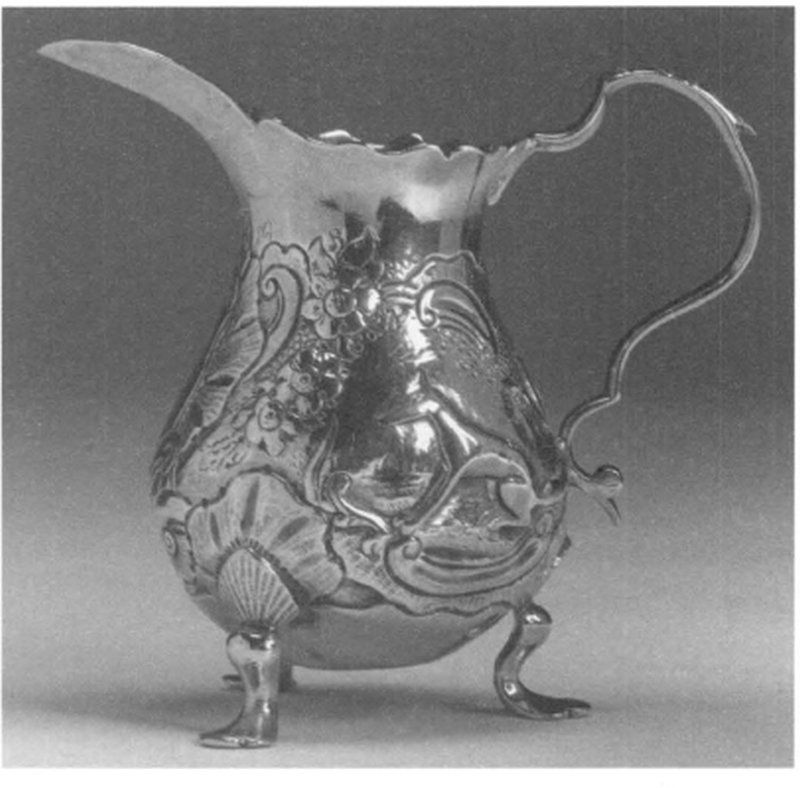
Fig. 17. William Simpkins (1704–1780), creampot (left side), Boston, Massachusetts, ca. 1750. Silver; h. 313⁄16 in. The Cleveland Museum of Art, Gift from the J. H. Wade Fund (21.955). © Cleveland Museum of Art, 2000.
The creampot is engraved with the monogram G/DS and is said to have been made for a member of the Gray family of Boston. Why would this fable have been thought suitable for the Gray’s tea table in roughly 1750? At the ritual of teatime, the illustrations of the fable would have provided a conversation piece to add to the sociability of the occasion. As suggested above, the creampot linked its owners to a large book with lavish illustrations—an object then accessible only to people with money, education, and they would want to think, taste. Moreover, the tenor of the exchange between the dog and wolf would have had implications for New Englanders specific to the ramifications of King George’s War.
The creampot was made soon after the resolution of the war, which was part of the ongoing conflict between England and France for the control of North America. New Englanders contributed to that struggle in 1745 with their successful siege of the French fortress of Louisbourg, a fortification that guarded the entrance to the St. Lawrence River and sheltered French privateers who preyed on the shipping of New England merchants. The colonists took great pride in the capture of Louisbourg. In the treaty made at Aix-la-Chapelle that concluded the war in 1748, however, the English gave Louisbourg back to the French in exchange for Madras, which the French had captured. The colonists felt betrayed by this action. The fable as depicted on the creampot parallels these events: France, the open foe, certainly was a curse for New Englanders, but by returning Louisbourg to France, England, the pretended friend, reveals itself to be the worse enemy.
Fig. 19. Jacob Hurd (1702/03–1758), creampot, Boston, Massachusetts, ca. 1750. Silver; h. 3⅞ in. The Cleveland Museum of Art, Gift of Hollis French (40.219). © Cleveland Museum of Art, 2000.
The pride in their shipping that played a part in these events, and as such became a motivation for colonial self-defense, also appears on several of the creampots. Scenes on two Hurd pieces certainly expressed pride on the part of owners who derived their wealth from the sea. One Hurd creampot depicts a ship tethered to a steep, tree-covered bank, several of which frame the body of water (fig. 19). This creampot, which bears the Vassall arms, probably belonged to John Vassall, a Harvard-educated merchant who lived in Cambridge and had ties to the sugar trade in Jamaica. A chased scene on another Hurd creampot (not illustrated) shows another ship, this one from the rear, moored to the shore; in this illustration, a figure near a house peers at the ship with a spyglass.26
The remaining images are more explicit descriptions of conflict, weaponry, and military fortifications, and in several cases they refer almost directly to New England geography. Two more Hurd creampots depict scenes of maritime warfare; on one, two ships confront one another (fig. 20); on the other, a ship tows a small boat from which cannon smoke billows (fig. 21). Such images would have been familiar to New Englanders. In William Burgis’s South East View of ye Great Town of Boston, first published in 1725, a ship in the left foreground tows a small boat; the billowing puffs of smoke from the ship’s cannon seems a likely source for the chasing on the latter creampot.27 A comparison of the original Burgis view of 1725 and the revised version published in 1743 offers evidence of the enhanced emphasis on militarism and fortifications in Boston in the 1740s. The later version shows an expanded South Battery with the notation “A New Battery 35 guns,” the addition of Fort George on Bird Island at the lower left, and of Fort Charles at the middle of the right edge. In the intervening twenty years fortifications had assumed increased importance, including strengthening the Boston Harbor defenses beginning in 1739.28
A more elaborate scene chased on another Hurd creampot shows a fortification with ships nearby (fig. 22). A sentinel patrols the fortification, which has masonry walls, cannon, and a watchtower that flies the British flag. Below the fortification a figure stands on a wharf that projects into the water, where a small two-masted vessel is moored. To the right a large ship flying the flag of the East India Company rides with sails furled. The scene has been interpreted as Castle William, the fortified entrance to Boston Harbor, which was also the subject of an unascribed view done in the early eighteenth century (fig. 23). Or the panel could portray the South Battery, which also flew the British flag from its sentinel tower and was outfitted with gunnery fortifications, as shown in the engraving of it made by Thomas Johnston about 1765 (fig. 24). Of course, the chaser could also have improvised a scene that combined elements from both of these engravings.
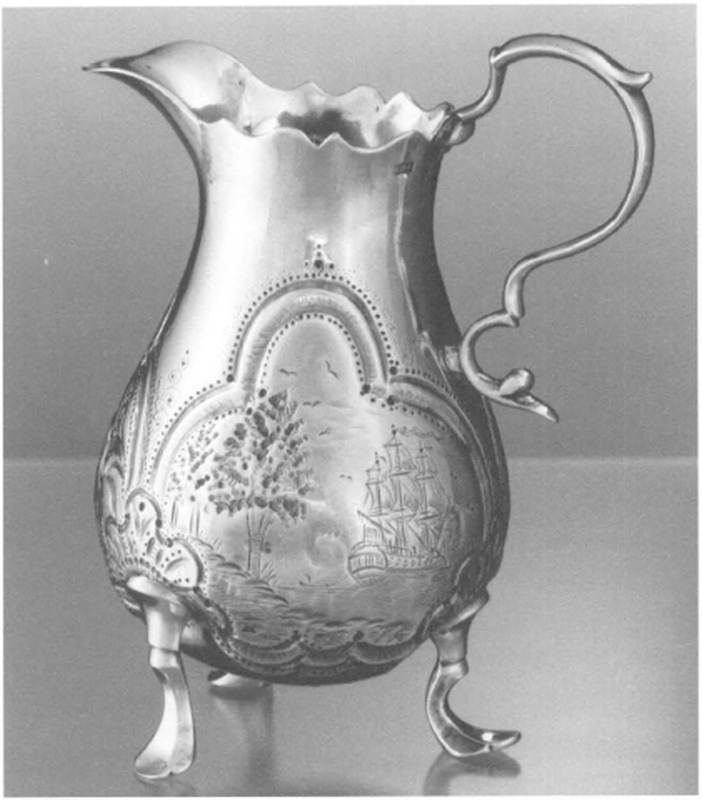
Fig. 21. Jacob Hurd (1702/03–1758), creampot, Boston, Massachusetts, ca. 1750. Silver; h. 4½ in. Yale University Art Gallery, Mabel Brady Garvan Collection (1930.1371).
◑
Although this is only a small group of items, its iconography encompasses a broad range of beliefs and social concerns of New Englanders in the years around 1750. The ornament on these pieces might just be viewed as the craftsman’s aping of rococo-style narrative imagery, with a dash of period wit thrown in as the chasers depict the chase. Comparisons with other texts, however, such as popular songs and poetry, show the profound meanings these objects had for the people who owned and used them. While the ideas captured in these narratives transcend their geographical region, and possibly even their historical moment, the objects themselves are remarkable as representatives of a phenomenon apparently unique in the colonies: only mid-eighteenth-century Boston had this rich tradition of expressing these human feelings in pictorial form on their silver.
Fig. 22. Jacob Hurd (1702/03–1758), creampot, Boston, Massachusetts, ca. 1750. Silver; h. 4½ in. Yak University Art Gallery, Mabel Brady Garvan Collection (1934.348).
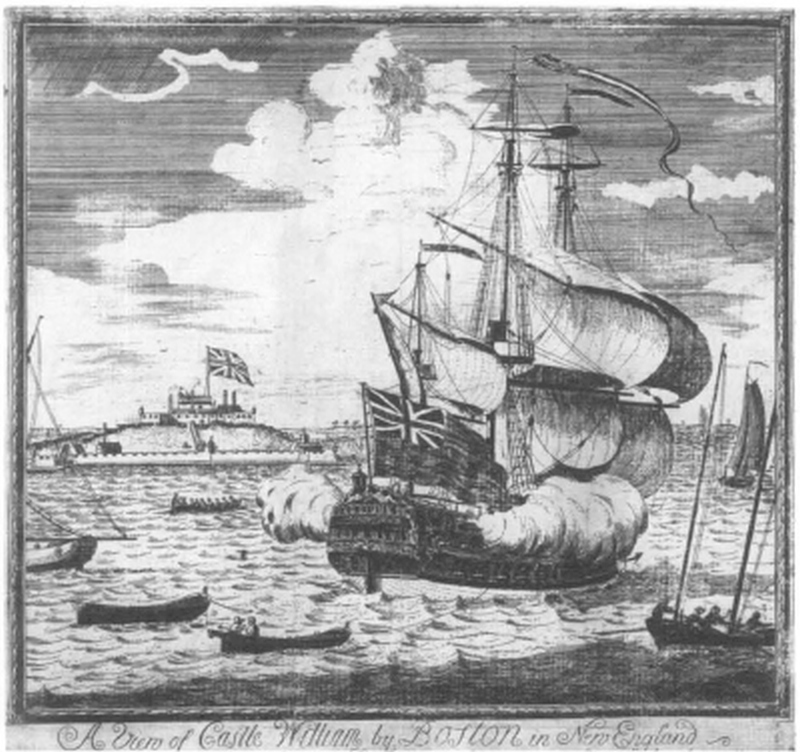
Fig. 23. Anonymous, A View of Castle William By Boston in New England, ca. 1730. Line engraving; h. 11½ in., w. 12½ in. The Metropolitan Museum of Art, bequest of Charles Allen Munn, 1924 (24.90.41).
Notes
1 Craftsmen working in other media in British North America did use narrative scenes to ornament objects. Narrative carving is occasionally found on Philadelphia furniture. Many cast-iron stove plates made in Pennsylvania and New Jersey have scenes based on Aesop’s fables. See Morrison H. Heckscher and Leslie Greene Bowman, American Rococo, 1750–1775: Elegance in Ornament (New York: The Metropolitan Museum of Art and Los Angeles County Museum of Art, 1992), 202; and Henry C. Mercer, The Bible in Iron, 3d ed. (Doylestown, Pa.: Bucks County Historical Society, 1961), 231–32, 236, 248; nos. 291–93, no. 316, no. 381.
2 For a discussion of the introduction of the rococo style in America, see Heckscher and Bowman, American Rococo, 1750–1775.
3 The age of the chasing on the creampots by Simpkins and Edwards has been questioned; see Phillip M. Johnston, Catalogue of American Silver: The Cleveland Museum of Art (Cleveland: Cleveland Museum of Art in cooperation with Indiana University Press, 1994), 46, 144. A comparison of the chasing on the creampots, however, to the Simpkins teapot and the Dane box suggests it is all by the same hand. In addition, the imagery on the silver is consistent with other forms of artistic expression in Boston at the time these pieces would have been made.
4 Cox’s work appeared in many editions throughout the eighteenth and into the nineteenth century. Richard Blome’s more elaborate publication appeared in 1686 and was reissued in the early eighteenth century.
5 George Francis Dow, comp., The Arts and Crafts in New England: Gleanings from Boston Newspapers, 1704–1775 (Topsfield: Wayside Press, 1927), 24. Abbott Lowell Cummings, ed., Rural Household Inventories: Establishing the Names, Uses, and Furnishings of Rooms in the Colonial New England Home, 1675–1775 (Boston: Society for the Preservation of New England Antiquities, 1964), xxxvi. These prints might have been hunting scenes by John Boydell, as for example, A North View of Denbigh Castle, in North Wales; Nancy Graves Cabot, “The Fishing Lady and Boston Common,” Antiques 40, no. 1 (July 1941): 30; Dudley Snelgrove, British Sporting and Animal Prints, 1658–1874 (London: Tate Gallery for the Yale Center for British Art, 1981). In Snelgrove, see p. 210 for the set of seven, Fox-Hunting engraved by L. Truchy and C. Canot after John Wootton in 1735; see p. 211 for the set of four, Stag Hunting engraved by R. Sheppard after Jan Wyck; see p. 155 for a set of twelve hunting prints after James Seymour and others.
6 For the embroideries that include horsemen, hounds, and stags see an anonymous embroidery in Betty Ring, Girlhood Embroidery: American Samplers and Pictorial Needlework, 1650–1850, 2 vols. (New York: Alfred A. Knopf, 1993), 1:47, fig. 45, no. 6; a picture attributed to Jane Tyler (b. ca. 1732 or 1733) that descended in the Gilman family of Exeter, N.H. (Nancy Graves Cabot, “Another Needlework Picture, Adam and Eve,” Antiques 45, no. 6 [June 1944]: 300–301); and a picture by Mary Pickering, ca. 1748 (Ring, Girlhood Embroidery, 1:47, fig. 44). The pictures that simply show hounds chasing a stag include an example by Johanna Ball, b. 1732 (Cabot, “The Fishing Lady and Boston Common” fig. 4); a chimneypiece attributed to Eunice Bourne, ca. 1748 (Ring, Girlhood Embroidery, 1:44, fig. 40); a chimneypiece that descended in the Lowell family (Helen Bowen, “The Fishing Lady and Boston Common,” Antiques 4, no. 2 [August 1923]: 72, fig. 5); a picture that descended in the Hill family of Boston (Bowen, “The Fishing Lady and Boston Common,” 73, fig. 6); and a picture attributed to Mary (Polly) Burns (1753–1794) (Ring, Girlhood Embroidery, 50, fig. 48).
7 Ring, Girlhood Embroidery, 1:45.
8 For the example from 1746, see Ring, Girlhood Embroidery, fig. 43. For the example from 1748, see Susan Burroughs Swan, A Winterthur Guide to American Needlework (New York: Crown Publishers, Inc., 1976), 36, pl. IV.
9 In addition to the picture by Sarah Warren, see the 1748 picture at Winterthur (Nancy Graves Cabot, “Engravings and Embroideries,” Antiques 40, no. 6 [December 1941]: 367, fig. 1), a picture worked by Miss Derby of Salem (Bowen, “The Fishing Lady and Boston Common,” 73, fig. 7), and a picture embroidered by Mary Avery (Bowen, “The Fishing Lady and Boston Common,” 73, fig. 8).
10 Only the embroidered picture by Hannah Otis at the Museum of Fine Arts, Boston, ca. 1750, shows a figure practicing archery.
11 See, for example, the engraving by L. Truchy and C. Canot after John Wootton (Yale Center for British Art, B1985.36.1280), although this and other images do not correspond exactly to the pose on the Hurd creampot.
12 See E. McSherry Fowble, Two Centuries of Prints in America, 1680–1680: A Selective Catalogue of the Winterthur Museum Collection (Charlottesville: University Press of Virginia for the Henry Francis du Pont Winterthur Museum, 1987), no. 125.
13 Cited in Robert Francis Seybolt, The Private Schools of Colonial Boston (Cambridge, Mass.: Harvard University Press, 1935), 70.
14 For the Jacob Hurd creampot (see fig. 22), see Kathryn C. Buhler and Graham Wood, American Silver: Garvan and Other Collections in the Tale University Art Gallery, 2 vols. (New Haven: Yale University Press for the Yale University Art Gallery, 1970), 1:128–29, no. 150. King, Girlhood Embroidery, notes needlework examples of this kind of image; see, for instance, the piece by Eunice Bourne, 44, fig. 40.
15 George Bickham, Jr., The Musical Entertainer (1740; New York: Broude Bros., 1965), 7.
16 Rodris Roth, Tea Drinking in Eighteenth-Century America: Its Etiquette and Equipage (Washington, D.C.: Smithsonian Institution, 1961), 66–70.
17 Another picture completed by an unknown woman about 1760 has as its central focus a man and a woman standing side by side; the woman holds a bird in her hand (Ring, Girlhood Embroidery, 47, fig. 45).
18 This couple bears comparison to another pair pictured on the sheet music for “The Apology,” also from Bickham. The theme of the song is male repentance for having shown affection to another woman. However, that does not appear to be the subject of the needlework due to the presence of cupid.
19 In Masters of Seventeenth-Century Dutch Genre Painting (Philadelphia: Philadelphia Museum of Art, 1984), Peter C. Sutton, citing E. de Jongh, “Double Entendre in Some Seventeenth-Century Genre Subjects,” has written “numerous seventeenth-century texts indicate that in Dutch and German vogel (bird) was often synonymous with the phallus; vogelen (to bird) was a euphemism for sexual intercourse; and vogelaar (bird catcher) could refer to a procurer or a lover.” The sexual connotations of birds were expressed in many forms in seventeenth-century Dutch paintings and prints; see pp. 250–51. Thomas Michie brought this information to my attention. Deborah Diemente also supplied a reference to an eighteenth-century French song in which a maiden loses her virginity to a nightingale; see Bergerettes: Twenty Romances and Songs of the Eighteenth Century, comp. J. B. Weckerlin (New York: G. Schirmer, Inc., 1941). English songs and popular poetry of the eighteenth century suggest that these connotations prevailed in English culture as well.
20 Bickham, Musical Entertainer, 17. See also in the same volume “The Persuasive Lover,” 48.
21 Joseph Yarrow, comp., A Choice Collection of Poetry by the most Ingenious Men of the Age (York, Eng.: A. Staples, 1738).
22 A Report of the Record Commissioners of the City of Boston, Containing the Boston Marriages from 1700 to 1751 (Boston: Municipal Printing Office, 1898), 286.
23 For the teapot by John Burt, see Francis J. Puig et al., English and American Silver in the Collection of The Minneapolis Institute of Arts (Minneapolis: Minneapolis Institute of Arts, 1989), 236–37. For the sugar bowl by Thomas Dane, see John Marshall Phillips, Masterpieces of New England Silver, 1650–1800 (New Haven: Yale University Art Gallery, 1939), 35.
24 See L. Stephen, English Literature and Society in the Eighteenth Century (New York, 1904).
25 Moses Coit Tyler, A History of American Literature, 1607–1765 (New York: Collier Books, 1962), 301–14, 363–72.
26 See Buhler and Hood, American Silver, 127–28, no. 149. This creampot tentatively has been identified as bearing the Johnson arms and also has the initials “BI” and “I / IS.”
27 For illustrations of the different issues of the Burgis view of Boston, see John W. Reps, “Boston by Bostonians: The Printed Plans and Views of the Colonial City by its Artists, Cartographers, Engravers, and Publishers,” in Boston Prints and Printmakers, 1670–1775 (Boston: Colonial Society of Massachusetts, 1973), 36–41.
28 A committee was established in Boston in 1739–40 to improve the deteriorated conditions of the South and North Batteries. In 1744 a vessel arrived from England with twenty forty-two-pound cannon and two mortars for Castle William. Col. Richard Gridley of Boston, who at the siege of Louisbourg erected a battery near the north cape of the harbor, was hired in 1746 by Gov. William Shirley to fortify Governor’s Island and to strengthen the Castle. In 1751 Gridley was paid £45 for his services and expenses. See Justin Winsor, ed., The Memorial History of Boston (Boston: James R. Osgood and Company, 1881), 2:116, n. 3.

